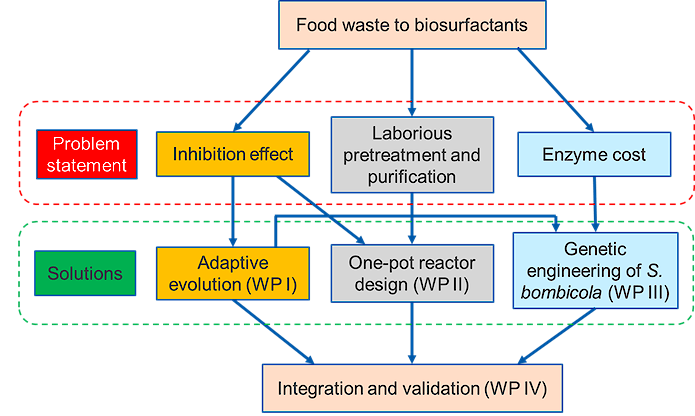Dr. Carol Lin’s project awarded by the RGC via EU-Hong Kong Research and Innovation Cooperation Co-funding Mechanism
Dr. Carol Lin, Associate Professor, has been awarded HK$ 2,682,810 by the Research Grants Council (RGC) via European Union (EU)-Hong Kong Research and Innovation Cooperation Co-funding Mechanism. It is a part of European Horizon 2020 research and development project titled “Lactic acid and biosurfactants sourced from sustainable agricultural and industrial (food) WASTE feedstocks as novel FUNCtional ingredients for consumer products” (acronym: WASTE2FUNC) (Figure 1). This project was submitted in Topic ID: BBI-2020-S01-D1 Resolve supply-chain hurdles for turning residual waste streams into functional molecules for food and/or non-food market applications in Horizon 2020 Framework Programme. This was the ONLY ONE of 16 proposals funded in Topic D1; i.e. an overall successful rate of 6.25%.
About the Awarded Project:
Project Title: Development of One-step Food Waste Biorefinery via Novel Bioreactor Design, Functional Stain Adaptive Laboratory Evolution and Genetic Engineering
This project starts from 2021 which is coordinated by Bio Base Europe Pilot Plant; Department of Biotechnology, Faculty of Bioscience Engineering, Ghent University, Belgium with various academic and industrial partners. The proposed project aims to develop a food waste–derived biosurfactant via a novel fermenter design and the genetic engineering of a robust yeast to explore the bioeconomic viability of waste biorefineries. The proposed work signifies a new direction in the field of heterologous enzyme expression in an unconventional yeast strain and integrated hydrolysis–fermentation bioprocesses (Figure 2). In addition, environmental and economic effects/benefits associated with this new sustainable waste-based biorefinery production methodology will be evaluated.
In summary, the above-mentioned developments will lead to the production of modified Starmerella bombicola that can secrete hydrolytic enzyme(s), tolerate food waste inhibitors and improve sophorolipids productivity. Furthermore, the tailor-made bioreactor will enable one-pot food waste hydrolysis and fermentation. The proposed research project will not only reduce the sophorolipids production cost to benefit the market, but also lead to a carbon-neutral biorefinery and positively affect society.
For more details, please visit the following websites:
EU-HK Research and Innovation Co-funding Mechanism by RGC - List of Funded Projects for 2020/21 (ugc.edu.hk)
https://www.ugc.edu.hk/eng/rgc/funding_opport/eu_hk/funded_research/ec2021_laysum.html#ECityU10220

 ?
?
Figure 1. WASTE2FUNC concept converting an existing green electricity biorefinery into a novel integrated self-sufficient (for electricity and heating) biorefinery for the production of second generation lactic acid (2G LA) and second generation biosurfactants (2G BSs) starting from food (crop) waste in a cascading approach.

Figure 2. Schematic diagram of the proposed project.